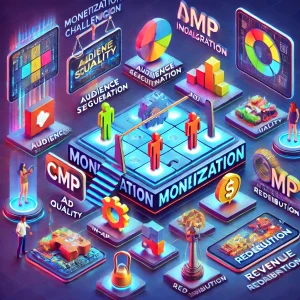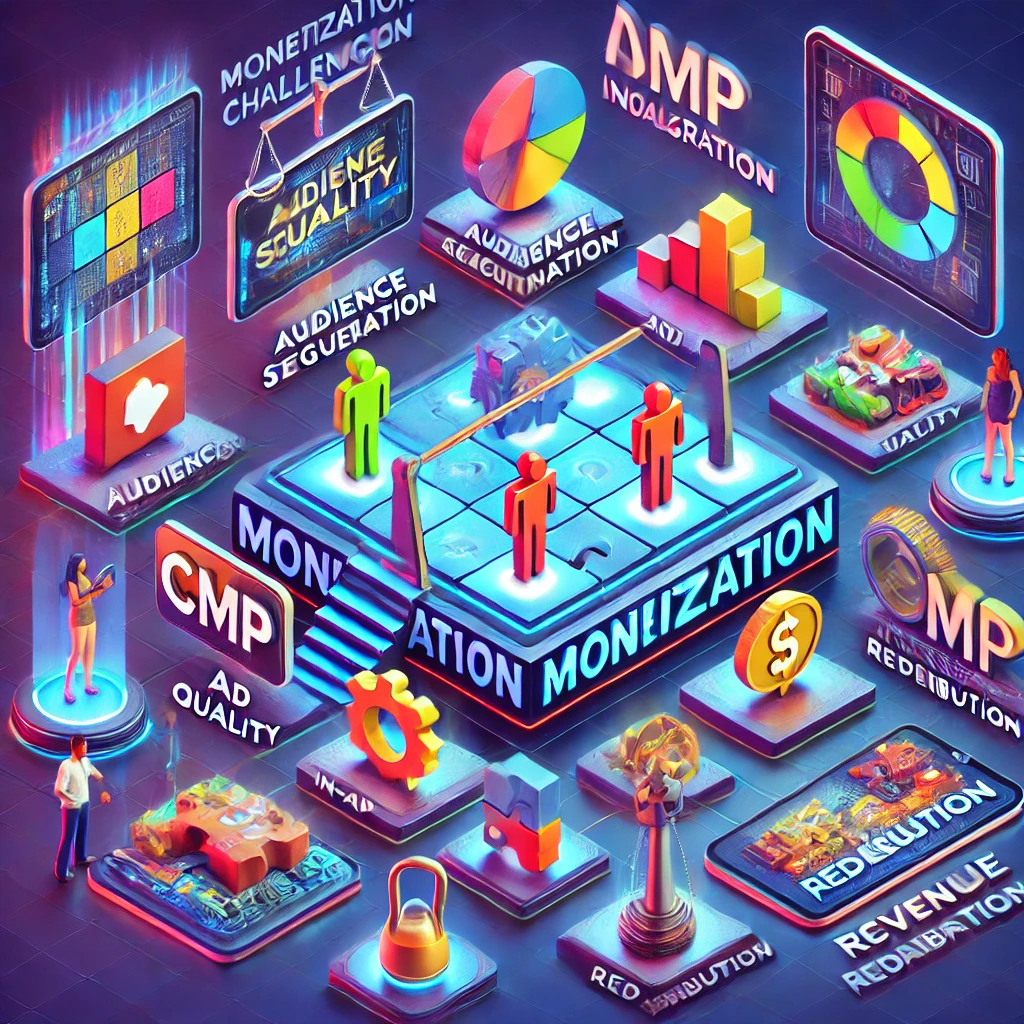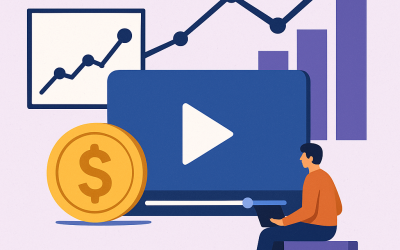Monetization Challenges in the Evolving Gaming Landscape
The mobile gaming industry is booming, but monetizing games effectively remains a complex challenge. As new technologies, user behaviors, and regulations emerge, developers must adapt their monetization strategies to keep up. GameForum did an extensive survey of 200 Monetization Experts and came up with five key monetization challenges… we used the report to touch on the Monetization challenges and further suggested ways to remedy to overcome them.
[ez-toc]
-
Contents
- 0.1 Audience segmentation has always been a cornerstone of successful game monetization. However, it’s becoming more complicated due to a few factors:
- 0.2 Maintaining high ad quality while maximizing revenue has become more difficult for mobile game developers due to several reasons:
- 0.3 Mobile game developers traditionally relied on two main revenue streams: In-App Advertising (IAA) and In-App Purchases (IAP). However, rising user acquisition costs, declining eCPMs, and changing user preferences are driving developers to rethink their revenue splits:
- 0.4 Consent Management Platforms (CMPs) are now essential to comply with data protection regulations. However, implementing these platforms can lead to unintended consequences:
- 0.5 The transition from traditional waterfall models to Real-Time Bidding (RTB) is shaking up the advertising platform landscape:
- 1 How AppLixir Can Help
Audience segmentation has always been a cornerstone of successful game monetization. However, it’s becoming more complicated due to a few factors:
-
- Increased Complexity in User Behavior: The mobile gaming audience is more diverse than ever, with users exhibiting varied preferences, engagement levels, and spending habits. This makes it difficult to create uniform ad experiences for all.
- Shifts in Ad Monetization Models: With the rise of real-time bidding (RTB) and shifts in cost per mille (CPM), traditional segmentation strategies are no longer sufficient. Developers now need more granular segmentation to target the right ads and sustain ad revenue.
- Data Privacy Regulations: The introduction of regulations like GDPR and CCPA adds another layer of complexity. Collecting user data for segmentation has become harder, making it difficult to balance personalization with compliance.
-
Potential Remedies around Audience segmentation
- Invest in Advanced Analytics Tools: To stay ahead, game developers should leverage advanced analytics tools. These platforms can manage large datasets and provide insights into user behavior, helping to fine-tune audience segments.
- Start Simple and Iterate: Begin with broader segments (e.g., spenders vs. non-spenders) and refine them based on actual performance data. This step-by-step approach minimizes complexity and ensures sustainable improvement.
- Collaborate Across Teams: Cross-functional collaboration between product, marketing, and monetization teams is crucial. Ensuring everyone aligns around user segmentation helps create a coherent strategy.
- Utilize Machine Learning: Machine learning can dynamically predict user behavior and optimize segmentation in real-time. This automation ensures that users receive ads tailored to their interactions within the app.
- Respect Privacy Laws: Always ensure compliance with data privacy regulations. Using anonymized or aggregated data helps mitigate risks while maintaining effective segmentation.
Continuing on my Monetization Challenges in the Evolving Gaming Landscape post, next is
-
Maintaining high ad quality while maximizing revenue has become more difficult for mobile game developers due to several reasons:
-
- Aggressive Ad Practices: Some advertisers focus on high engagement, often at the expense of user experience, using intrusive or misleading ad formats.
- Lack of Control Over Ad Content: Many game developers rely on third-party ad networks. As a result, they have little control over the types of ads displayed, leading to potential issues with low-quality or harmful content.
- Short-Term Revenue Focus: Aiming for quick ad revenue can sometimes hurt long-term app health, driving users away due to an overload of ads.
-
Potential Remedies around Ad Quality/Fatigue:
- Use Ad Quality Filters: Select ad networks that offer robust filtering options. These filters allow you to block intrusive or irrelevant ads, improving user experience.
- Choose Reputable Ad Partners: Collaborate with ad networks that prioritize ad quality. Ensuring your partners adhere to strict quality standards can make a significant difference in user retention.
- Integrate User Feedback: Incorporate in-app features that let users report problematic ads. This immediate feedback helps you take action to maintain ad quality.
- Implement Ad Frequency Caps: Limit the number of ads shown per session to strike a balance between revenue and user satisfaction. Overloading users with ads can drive them away from your game.
- Industry Collaboration: Collaborating with other publishers to push for higher ad quality standards can help create a healthier advertising ecosystem.
Continuing on my Monetization Challenges post, next is
-
Mobile game developers traditionally relied on two main revenue streams: In-App Advertising (IAA) and In-App Purchases (IAP). However, rising user acquisition costs, declining eCPMs, and changing user preferences are driving developers to rethink their revenue splits:

-
- Higher User Acquisition Costs: Increasing cost per install (CPI) means acquiring new users has become expensive. This forces developers to reconsider their revenue models.
- Declining Ad Revenues: As eCPMs decrease, relying solely on ad revenue becomes less viable.
- Changing User Preferences: Users are often deterred by frequent ads or steep in-game purchases, making it difficult to rely on just one form of monetization.
- Internal Silos: Teams working on game development and monetization often operate separately, leading to disjointed strategies that fail to maximize both IAA and IAP revenue.
- Potential Remedies around IAA & IAP allocations:
- Adopt a Hybrid Monetization Model: Combine IAA and IAP to diversify revenue streams. Leverage user data to find the right balance between ads and in-game purchases for different user segments.
- Encourage Cross-Team Collaboration: Break down silos and encourage collaboration between developers and monetization teams. Working together leads to more cohesive strategies.
- Dynamic Segmentation: Use real-time data to segment users based on behavior. For example, show more rewarded ads to non-spenders and offer special IAP deals to likely spenders.
- User-Centric Design: Monetization features should enhance the user experience. For instance, integrate rewarded video ads that give players in-game benefits without being disruptive.
- Educate Your Teams: Both IAA and IAP should be valued equally. Experimentation and unbiased evaluation help ensure that all monetization features are optimized for the game’s audience.
-
Consent Management Platforms (CMPs) are now essential to comply with data protection regulations. However, implementing these platforms can lead to unintended consequences:
-
- Impact on Consent Rates: Poor CMP implementation can lower consent rates, reducing your ability to serve personalized ads and diminishing ad monetization potential.
- Technical Challenges: Implementing a CMP without disrupting the user experience is difficult. Poorly integrated CMPs can frustrate users, causing them to disengage.
- Regulatory Pressure: Compliance is non-negotiable, but it adds complexity to monetization strategies, making it harder to maximize ad revenue.
-
Potential Remedies around CMPs:
- Optimize CMP Implementation: Create user-friendly CMP interfaces that clearly communicate the benefits of consenting to personalized ads. A transparent approach may encourage higher consent rates.
- Follow Best Practices: Industry guidelines provide a solid foundation for CMP integration. By adhering to these standards, developers can reduce the likelihood of technical issues.
- Use Non-Personalized Ads: For users who do not consent, shift to contextual advertising. This ensures you can still generate some ad revenue while respecting user preferences.
- Regular Monitoring: Continually track how CMPs affect consent rates and ad revenue. Use this data to make informed adjustments to your CMP strategy.
- Educate Your Users: Build trust by explaining how user data is responsibly handled. Transparent communication can improve consent rates and reduce user concerns.
Last on Monetization Challenges in the Evolving Gaming Landscape post,
-
The transition from traditional waterfall models to Real-Time Bidding (RTB) is shaking up the advertising platform landscape:
-
- Shift from Waterfall to RTB: The move to RTB has made ad placement and pricing less predictable. New strategies are required to maintain revenue in this dynamic system.
- Technological Adjustments: Adapting to RTB requires changes to your monetization platform. This transition can be costly and time-consuming.
- Increased Competition: With more advertisers and developers using RTB, competition is driving down eCPMs, making it harder to maximize revenue.
-
Potential Remedies around Ad Tech:
- Set Strategic Floor Prices: Establish minimum acceptable prices for your ad inventory. This strategy prevents you from underselling your ads in the RTB environment.
- Invest in Technology: To stay competitive, upgrade or acquire mediation platforms that are optimized for RTB. Efficient participation in RTB helps ensure sustained revenue.
- Hybrid Mediation Strategies: Consider using both RTB and traditional mediation. This approach allows for flexibility while the market adjusts to the new bidding landscape.
- Closely Monitor Performance: Keep a close eye on ad performance metrics. This enables you to quickly adjust strategies in real-time based on evolving trends.
- Collaborate with Ad Partners: Work closely with demand-side platforms and ad networks. Building strong partnerships ensures that you can optimize demand and fill rates as the market shifts.
How AppLixir Can Help
Thank you for reading our post on Monetization Challenges in the Evolving Gaming Landscape!
At AppLixir, we specialize in helping mobile game developers tackle these monetization challenges head-on. Our rewarded video ads platform provides a seamless way to integrate high-quality, non-intrusive ads that enhance the gaming experience. With AppLixir, you can balance user engagement with ad revenue through strategic ad monetization that respects the player’s experience. Our platform supports advanced audience segmentation, ensuring you reach the right users while complying with privacy regulations. Whether you’re navigating the new bidding landscape or optimizing CMP integration, AppLixir offers the tools you need to succeed in the ever-evolving world of mobile game monetization.
Monetizing mobile games has become more challenging due to changes in user behavior, new technologies, and increasing regulation. By addressing these five key challenges—audience segmentation, ad quality, revenue redistribution, CMP fallout, and the new bidding landscape—developers can create sustainable monetization strategies that balance user experience with revenue growth.




